Half-Life 2 is a long and sprawling game, which, unlike the original’s narrow focus on the Black Mesa Research Facility, takes you from a Combine-occupied city and its underbelly to a zombie-infested mining town, a coastal area during Antlion spawning season, a former human prison turned, well, Combine prison and eventually back to the city and up the imposing Citadel for a climactic showdown. Every single section of that story is part of a whole and can’t really be taken apart, as it’s all one engrossing journey you should experience from start to finish.
But let’s do that anyway.
Half-Life 2 is composed of 14 (or 13 plus one “9a”) chapters, and while I will argue till my deathbed that every single one of those chapters is great in its own way, it’s still a fun exercise to try and rank them by overall quality, though not necessarily length.
Bear in mind that I’m not judging this by gameplay alone, as some chapters are essentially devoid of any, yet you won’t find them all bundled up together at the bottom of the list, because even those can be very enjoyable when done right. Half-Life as a series is a mix of various things, from storytelling (both environmental and more conventional), puzzles, shooting and many other mechanics, so I’ll be judging chapters based on how well they balance those elements or, alternatively, how their exceeding in some elevates them from the rest.
It should also go without saying that this is obviously a subjective list, so feel free to agree, disagree or even share your own list in the comments section down below.

Chapter 9a: Entanglement
Even the numbering of this chapter shows what an odd duck it is compared to the rest. This isn’t chapter 10, it’s chapter 9a. So, arguably, it could be considered part of chapter 9, except the game treats it as its own chapter, from having its own title to being in the chapter list and whatnot, so we will, too. But the name says a lot about how I feel about this one.
Part of why Nova Prospekt, which we’ll get to later, is great is the mix between the human prison blocks and the Combine architecture, which create a nice contrast that is still consistently oppressive. Entanglement, however, sees the Combine bits take over more and more as you get further into the facility, and it eventually just devolves into a bland blue metal architecture that’s, perhaps, the least inspired part of the whole Combine aesthetic.
Likewise, while it’s great to see Alyx Vance make a welcome return here after dropping out in chapter 4, the story kind of drags the chapter down to a halt near the end. The twist with Doctor Judith Mossman being in cahoots with the Combine works well and it does set up the rest of the story, but it ultimately boils down to the player passively watching as Mossman makes a fool out of them and Alyx. It also means that, ultimately, your whole rescue mission was pointless, as Eli is shipped off to the Citadel and you have to go rescue him… again.
That said, even the arguably worst chapter in the game has its own great moments, thanks in large part to Valve coming up with clever new gameplay ideas for each part of the game. This is where you finally get reprogrammed turrets, which can be great fun, although the defense against the Combine assault can be hell to get through on higher difficulties and goes on a bit too long, not to mention they do it twice in one chapter.
The idea itself of a last stand would later be executed far better in Episode Two’s This Vortal Coil, which adds to my point. Entanglement isn’t terrible, but it’s also kind of… a drag.
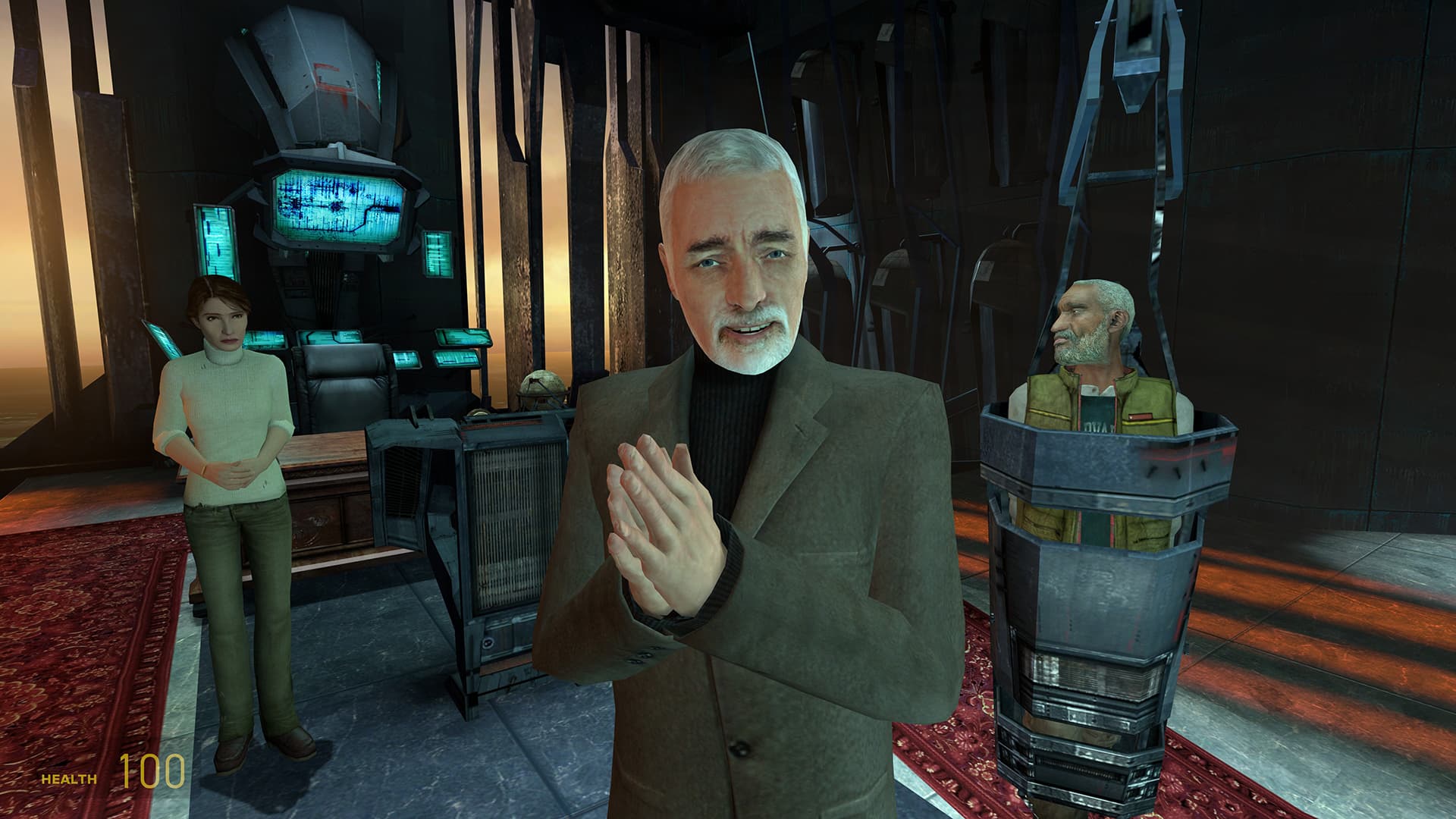
Chapter 13: Dark Energy
I don’t think it’s a wildly controversial claim to say that Valve aren’t really great with endings, especially when they were starting out.
Don’t get me wrong, I love the ending to Half-Life 2. Finally coming face-to-face with Dr. Breen after an entire game of hearing his monologuing is great, the lore and clues dropped throughout are intriguing and it’s always great to have the G-Man show up right at the nick of… time.
That said, ultimately, it’s a pretty underwhelming conclusion to the entire journey you’ve been through. You do get to defeat Dr. Breen (at least, presumably), but you have to wait until the next game to really see the impact of your actions on the Citadel, and otherwise it’s basically a repeat of the original game’s cliffhanger.
Gameplay-wise, it’s also a pretty bland finale, considering all the creativity of the rest of the game. By the end of it, you’re basically just throwing balls at everything, and the final boss, if you can even call it that, is just two Combine Dropships you throw balls at. In the end (no pun intended), it’s not the very best Half-Life 2 has to offer.
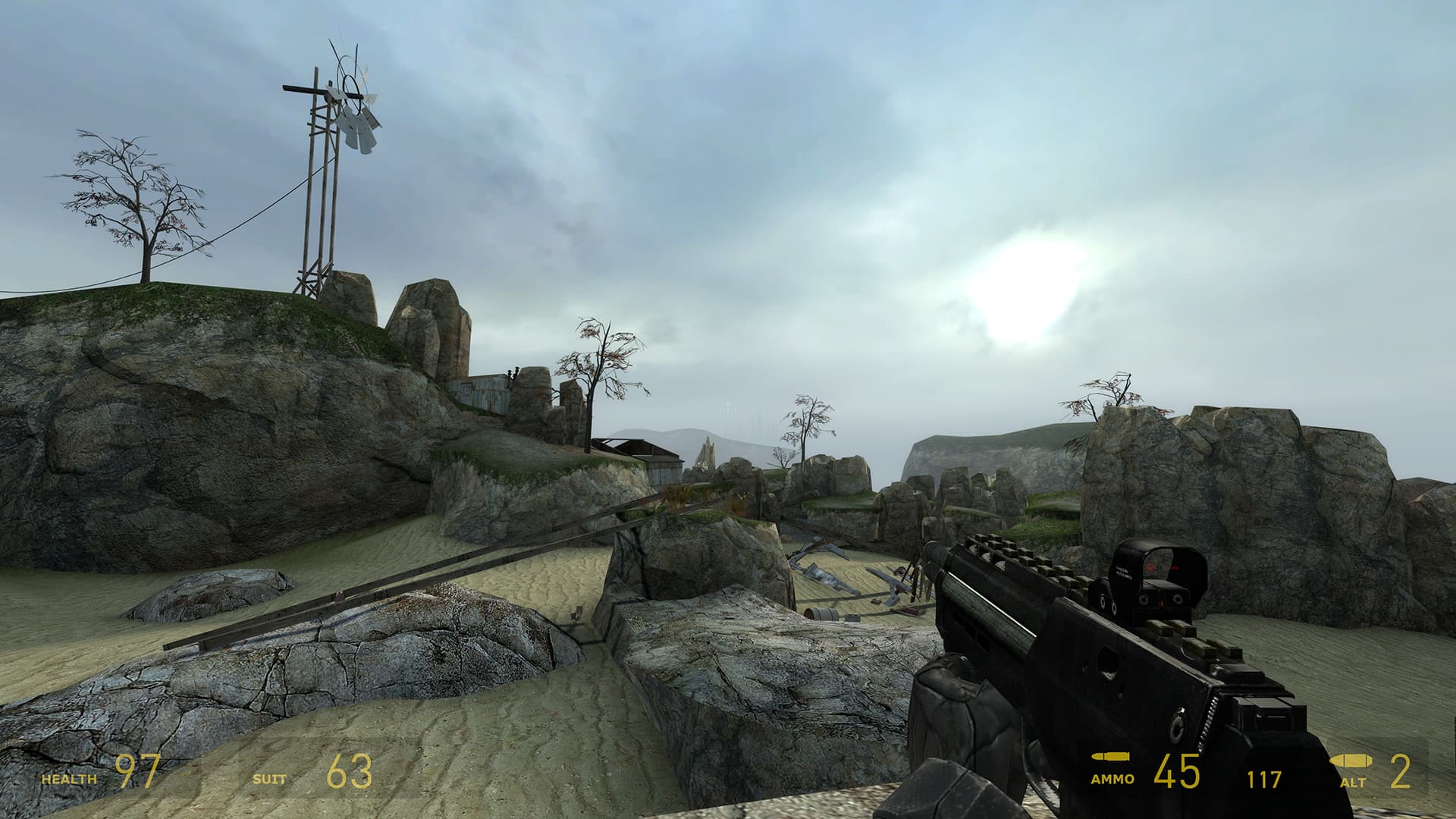
Chapter 8: Sandtraps
There’s a lot to like about this chapter. This is where the Antlion Guard is introduced, the closest the Half-Life 2 games get to a “mini-boss”, and the antlion bait, a.k.a. the pheropods, are great fun. The final section is also beautiful, especially for the time, with the moonlit beach you cross as you finally infiltrate Nova Prospekt.
That said, it’s essentially a transitional chapter between the coast and Nova Prospekt and a glorified training ground for the new pheropods, which go on to be used much more interestingly in the following chapter. It doesn’t really do anything that other chapters don’t do better, unless you count the “the floor is lava” section, which sucks.

Chapter 5: Black Mesa East
Okay, I had to get to a story chapter eventually, before the gameplay-first crowd had time to sharpen their pitchforks.
As far as story segments go, this one doesn’t really add much to the overall narrative nor does anything particularly interesting on its own. You finally get to the destination you’ve been told to go to throughout the entire game, only to… stand around as characters talk, hug and bicker amongst themselves, get a tease of a much better chapter to come, play a glorified tutorial and are quickly and unceremoniously shoved off to another place because the story needs you to not stay there anymore.
That said, there’s two things going for this chapter. One, a third of the way through the game, the game finally gives you the brilliant Zero-Point Energy Field Manipulator, more commonly known as the Gravity Gun, which was mind-blowing back in the day and is still pretty fun to mess around with, even today. Any other game would probably have you get it far earlier, but Half-Life 2 keeps you entertained enough until the big, game-changing tech gets handed to you, even though you barely do a thing with it here.
Oh, and the other one is Dog. That one speaks for itself.
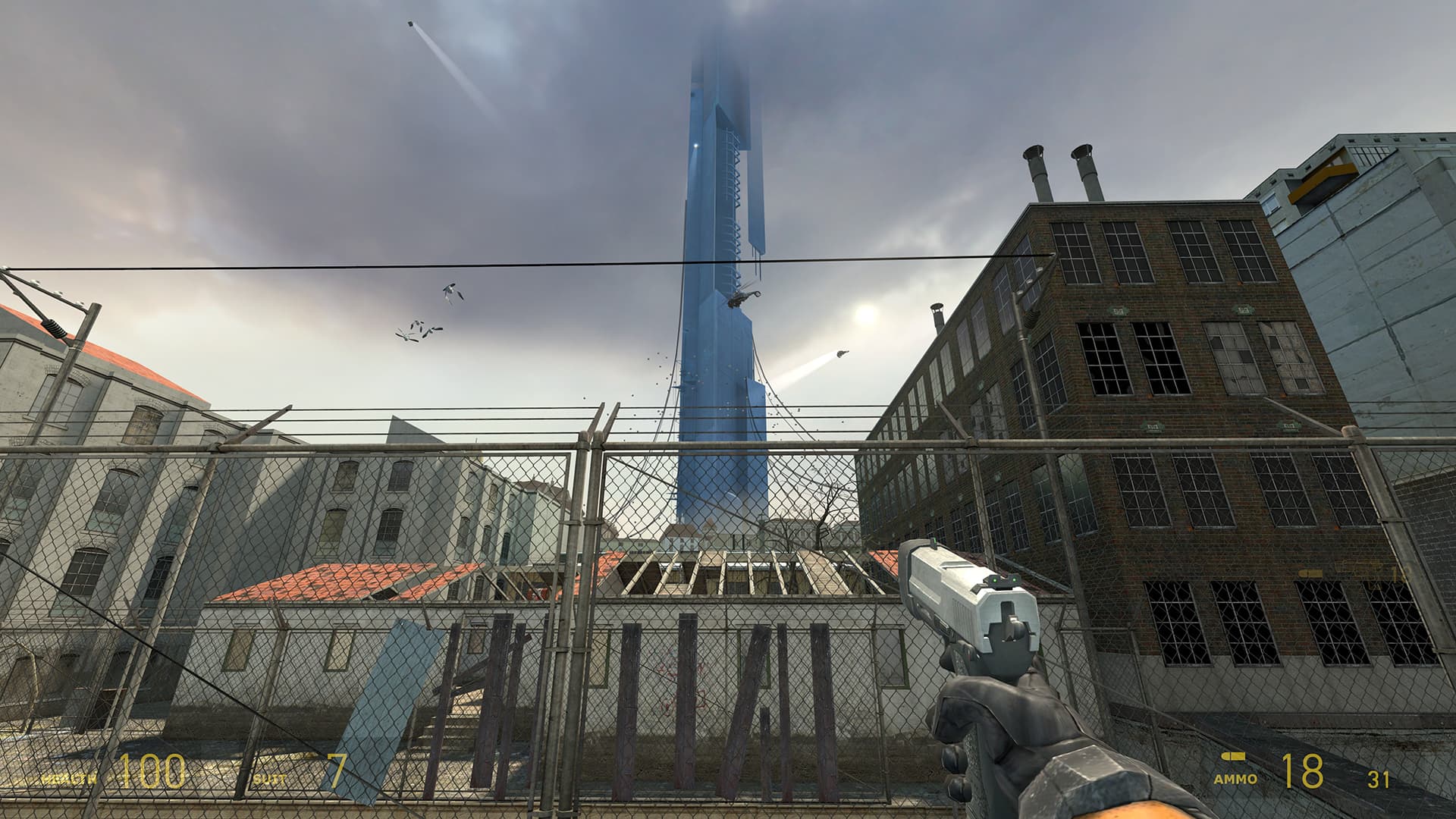
Chapter 3: Route Kanal
Route Kanal is fun, but suffers from being the first chapter where you actually get to, well, play the game.
Aesthetically it’s pretty well done, as the city you had just gotten used to gets steadily replaced by the sewers and canals beneath, and it’s very liberating to finally get to shoot those Civil Protection officers in the face after their incessant bullying earlier, not to mention the returning enemies like barnacles and headcrabs, as well as deadly surprises like the manhacks.
That said, since it’s where you finally get weapons after a lot of time of just being immersed in the story, it’s not the most fun one to play. You get the basic equipment like the pistol, the SMG and the grenades and use them against the introductory enemies of the game. Sure, the first time you use the physics engine to toss an explosive barrel towards a group of barnacles to then blow it up is great, but there’s much better to come.

Chapter 10: Anticitizen One
This one’s a mixed bag. Story-wise, it’s satisfying to see the impact of your actions in City 17 and help the citizens actually take back their city from the Combine. However, it also happens immediately after you leave Nova Prospekt, as well as because you left Nova Prospekt—it isn’t really due to anything you actively did as a player, just that the teleporter was unstable and therefore exploded. Uh, okay. It’s also jarring to jump forward in time one week with just a hand-wavy explanation that it’s a slow(?) teleport, wibbly-wobbly, timey-wimey.
Playing it, though, can be pretty fun. This is where the infamous squad mechanic comes in, with NPCs that just love to get in your way more than actually help… but I kinda adore that bit. It’s easy to get attached to your squadmates really quickly and, while you actually can’t really do all that much to command them, it’s still entertaining to finally play a leadership role in a game that, up until this point, just kept saying you were important while also having everyone else boss you around.
With that being said, everything also kind of blurs together for the most part, to the point I have trouble recollecting what happens in this chapter prior to a playthrough. But that bit in the square fighting off waves of Combine is actually pretty entertaining, much more so than Entanglement’s.
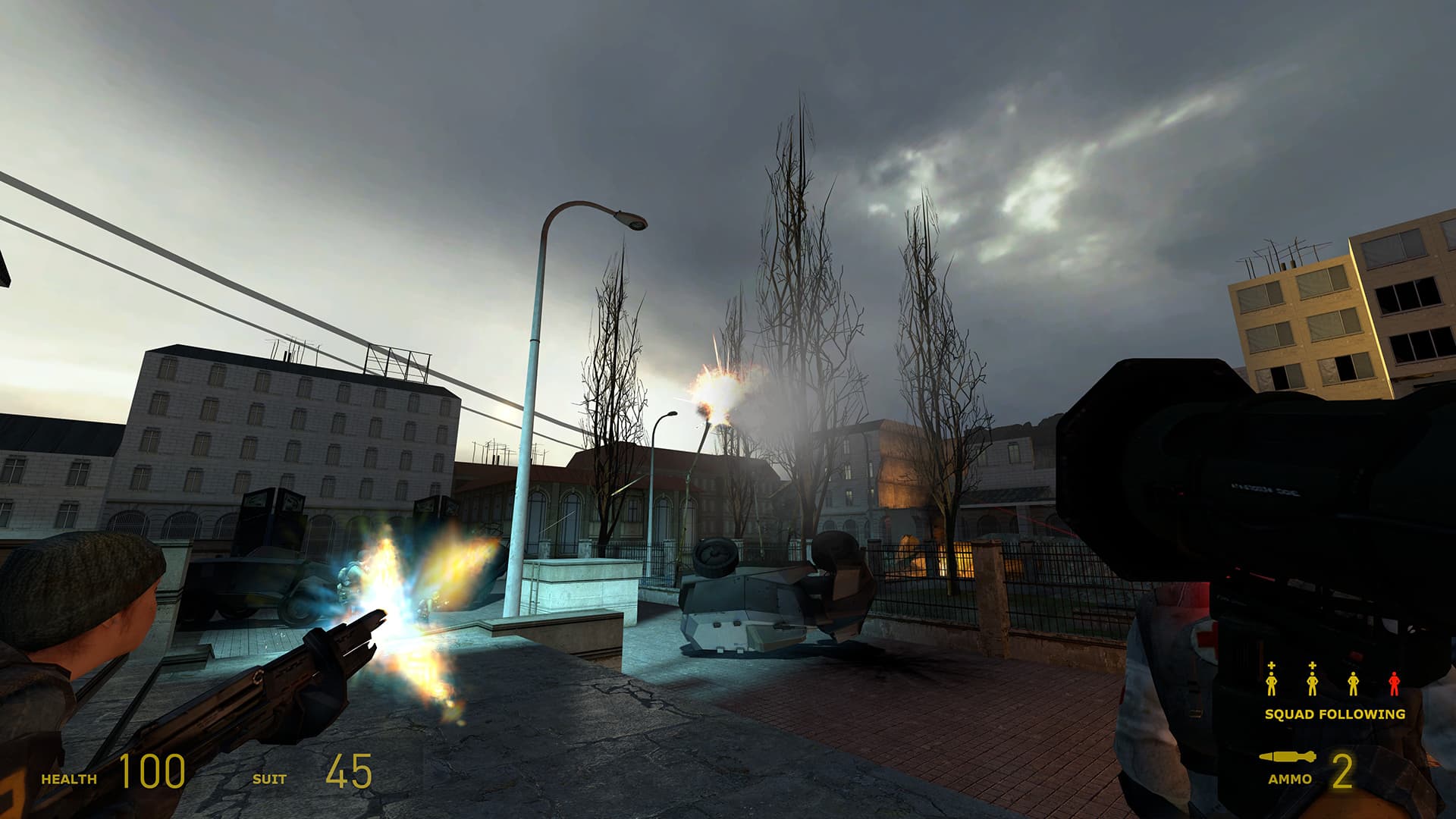
Chapter 11: “Follow Freeman!”
This is essentially the climax of the game, so you’d think it’d be a little bit higher on the list, but there’s a lot that works against this chapter.
First of all, I just have to say it: despite the build-up and how cool they look, the Striders are underwhelming. They go down in much the same way as a Combine Dropship would, except they don’t even have a defense against the rockets aside from just shooting you full of bullets. Here, it’s basically just pop out of cover to fire and then duck, over and over again. At least Episode Two had a fun new twist on that.
This could just be me, too, but the chapter also feels oddly unpolished. Maybe it’s just all the destroyed buildings near the end, but some things feel like they were rushed to finish the game, and you end up with some really unbalanced bits—something I think is also evidenced by the prevalence of medkits at the very last building, a quick fix for the spike in difficulty.
However, there’s one bright, shining star that redeems this chapter, and that is the Overwatch Nexus. Not only do you get to raid it with your best pal Barney, in sadly the first of only two such moments, but it’s also overall just chock-full of creative ideas, from the suppression device—not to be confused with the baby-preventing suppression field—raining dark energy hellfire from above, to the ground turrets you have to dispatch with a well-placed grenade, the room full of tripmines and even a traproom you have to defend. It’s great.
… was that a cat just now?

Chapter 12: Our Benefactors
This is where you finally make your way into the Citadel you’ve been staring at from afar the entire game, and… well, to be honest, I don’t know what I expected, because it’s mostly a featureless series of metal walls and Combine screens, with a glimpse here and there of a stalker or a Dropship assembly line, which eventually just becomes a Disneyland ride once you get caged in, unable to do anything but look around as you slowly make your way up.
Honestly, the only reason this ranks higher than the chapters before it is just how fun and cathartic it is to use the supercharged Gravity Gun. Yes, Judith, in this chapter, it very much is a toy, flinging Combine soldiers left and right like ragdolls and arguably inspiring a very successful (Garry’s) mod.
If there’s anything more fun than killing a Combine soldier by throwing another Combine soldier at is, let me know… right after this Combine soldier.
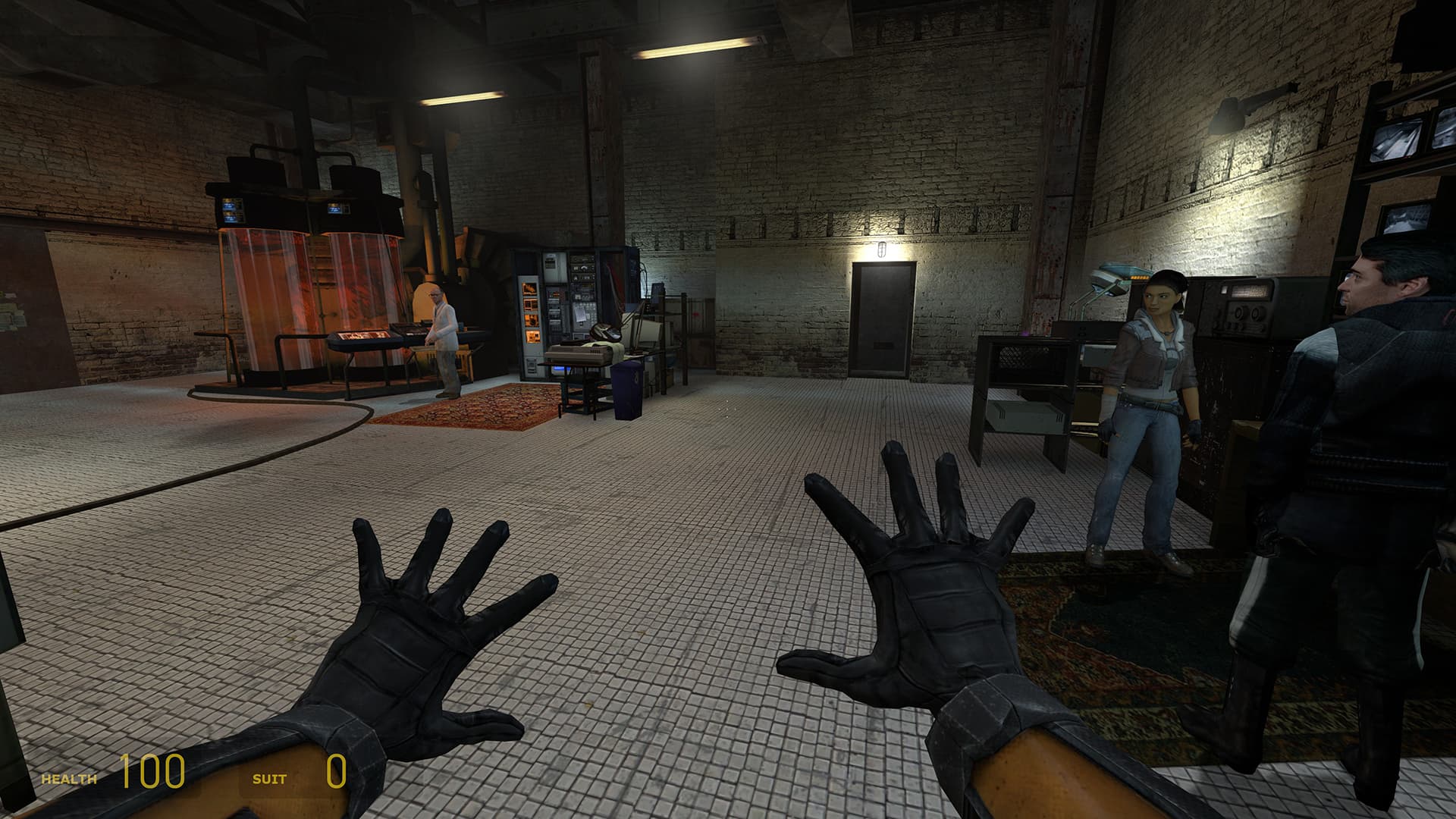
Chapter 2: “A Red Letter Day”
Back in the day, this one was revolutionary—so much so that even the cancelled E3 2002 reveal and the subsequent E3 2003 preview spotlighted it. The graphical fidelity (for the time) and the quality of the facial animations made this scene almost lifelike, and the fact that it wasn’t a mere cutscene or full-motion video, but an actual place you could walk around in made it all the more magical.
With its luster long gone, though, this is still a fun chapter, introducing most of the main cast and establishing their personalities, motivations and the game’s story as a whole, at least for the first third of it. You are, however, basically just standing around and being talked to for a while, so if the story is not really your thing, I’m sure you’d place this way below in the list.
Otherwise, you can thank “A Red Letter Day” for Doctor Kleiner, Eli Vance, Judith Mossman, Alyx and, of course, Lamarr.
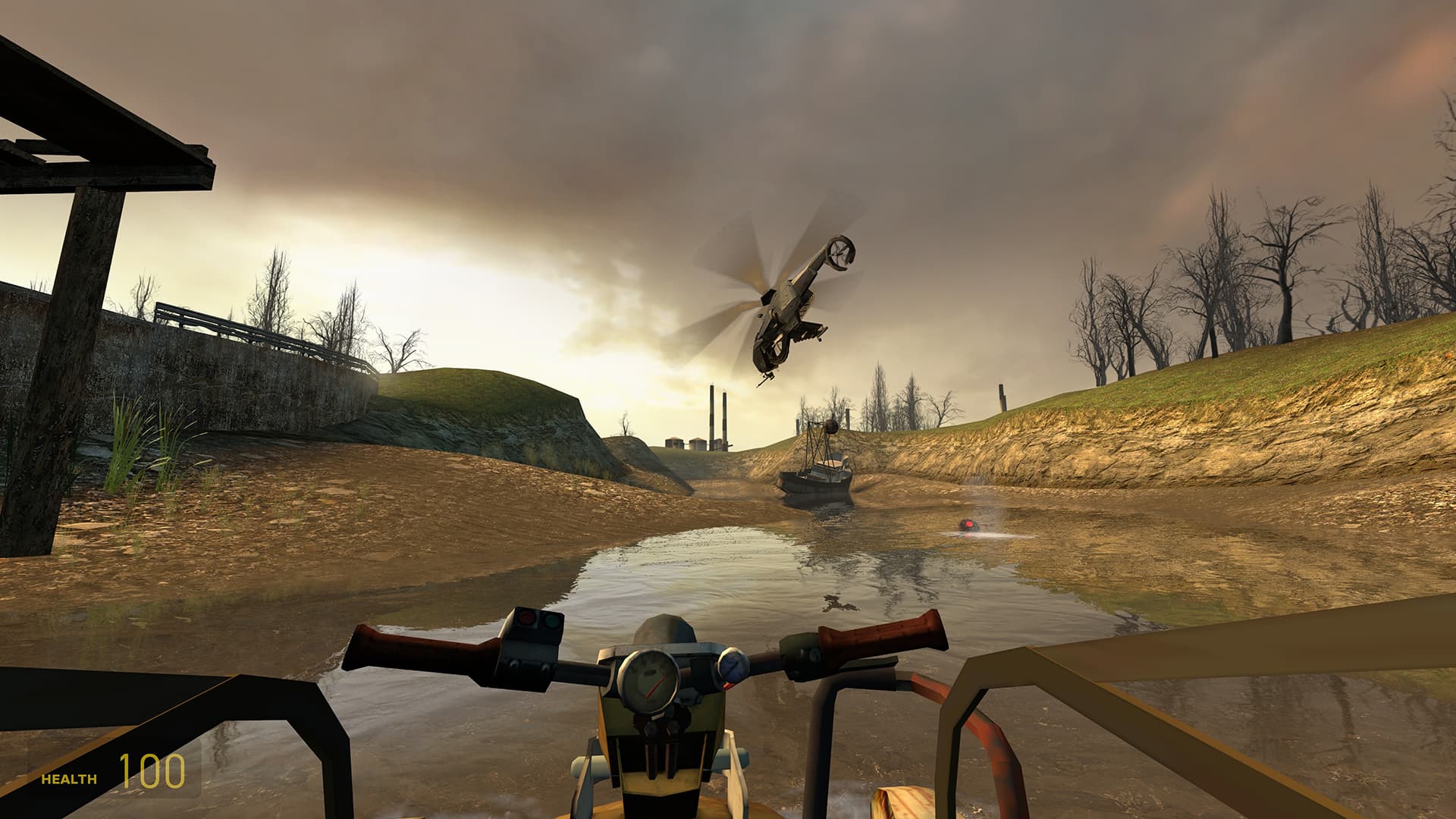
Chapter 4: Water Hazard
It’ll probably shock people how high this is on this list. I’m well aware that a lot of people just hate the airboat and this chapter as a whole, but… I just don’t see it.
Whereas Route Kanal introduces the idea that you’re being chased by the Combine, this is really the chapter where you feel it. This chapter has it all: it’s a long driving sequence—the first in the series!—with exploration, clever puzzles, on-foot segments, firefights in Combine warehouses, running over metrocops with an airboat and, last but definitely not least, a high-speed chase while a Hunter-Chopper hunts you, until you eventually get the means to fight back and take it down in what is possibly the most satisfying “boss battle” in the game.
If you’re not a fan of the driving, then this will definitely be a slog, but you can’t argue that it has something for everyone, and it’s even quite beautiful near the end, setting your climactic duel with your chapter arch-nemesis as the Sun goes down on your first day of this journey.
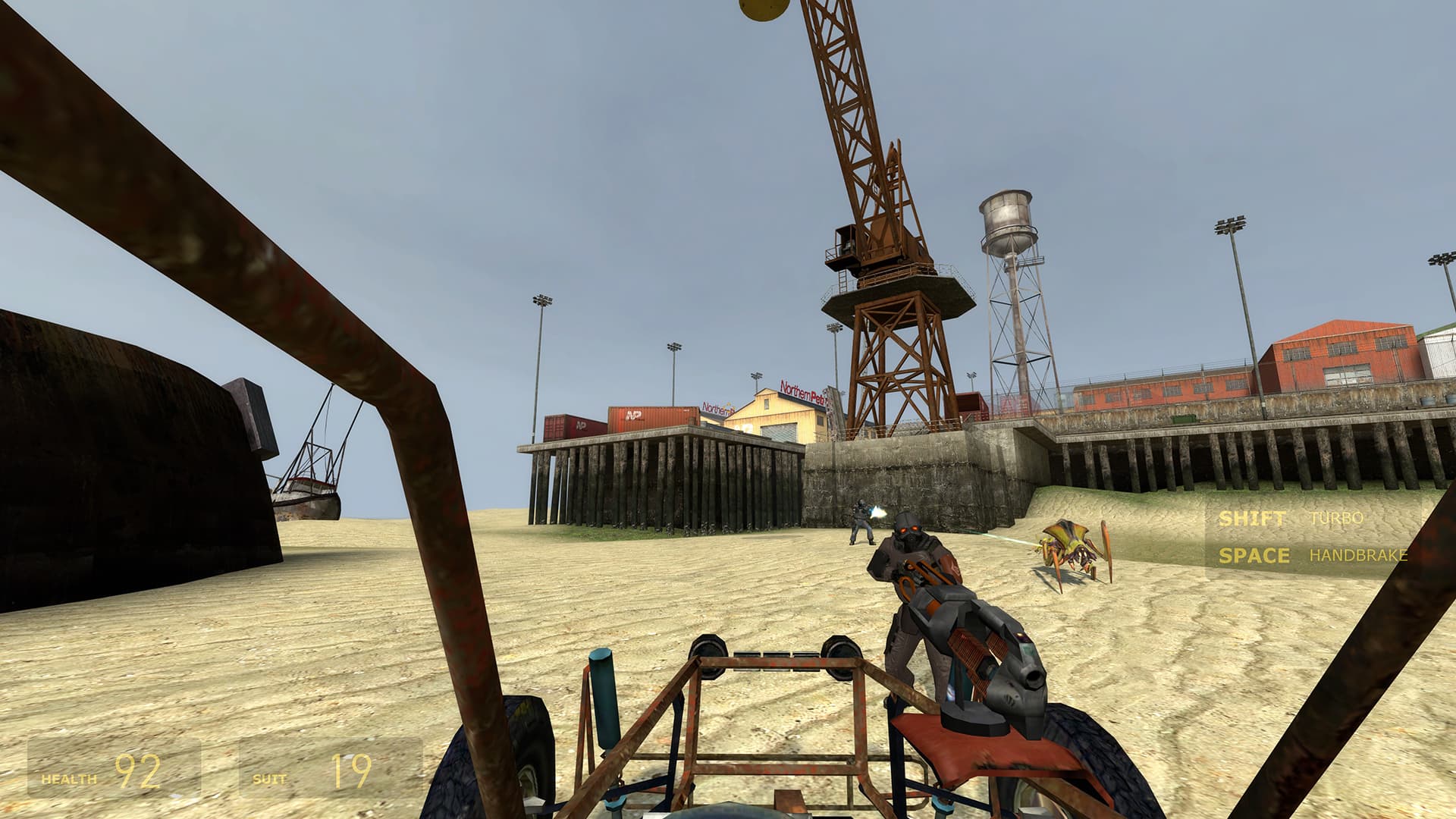
Chapter 7: Highway 17
Now, if Water Hazard is a chase, Highway 17 is a road trip.
Though not quite the first time Half-Life dabbled with a more open space, it’s still quite a treat to go from relatively cramped areas and long-winded story segments in Half-Life 2 to a vast coastline you can travel at your own pace, despite what the story may tell you.
Want to explore some dilapilated old buildings for supplies? Sure, go for it. Want to ignore all that and rush towards the next big setpiece? You can do that, too. And you have something for everyone here, from multiple Gunship battles to jumping through a window and over gaps, as well as the introduction of the crossbow and the brilliant bridge sequence.
Oh, not to mention, it introduces Colonel Odessa Cubbage, the best character in the series. Truly, one of the high points of the series.
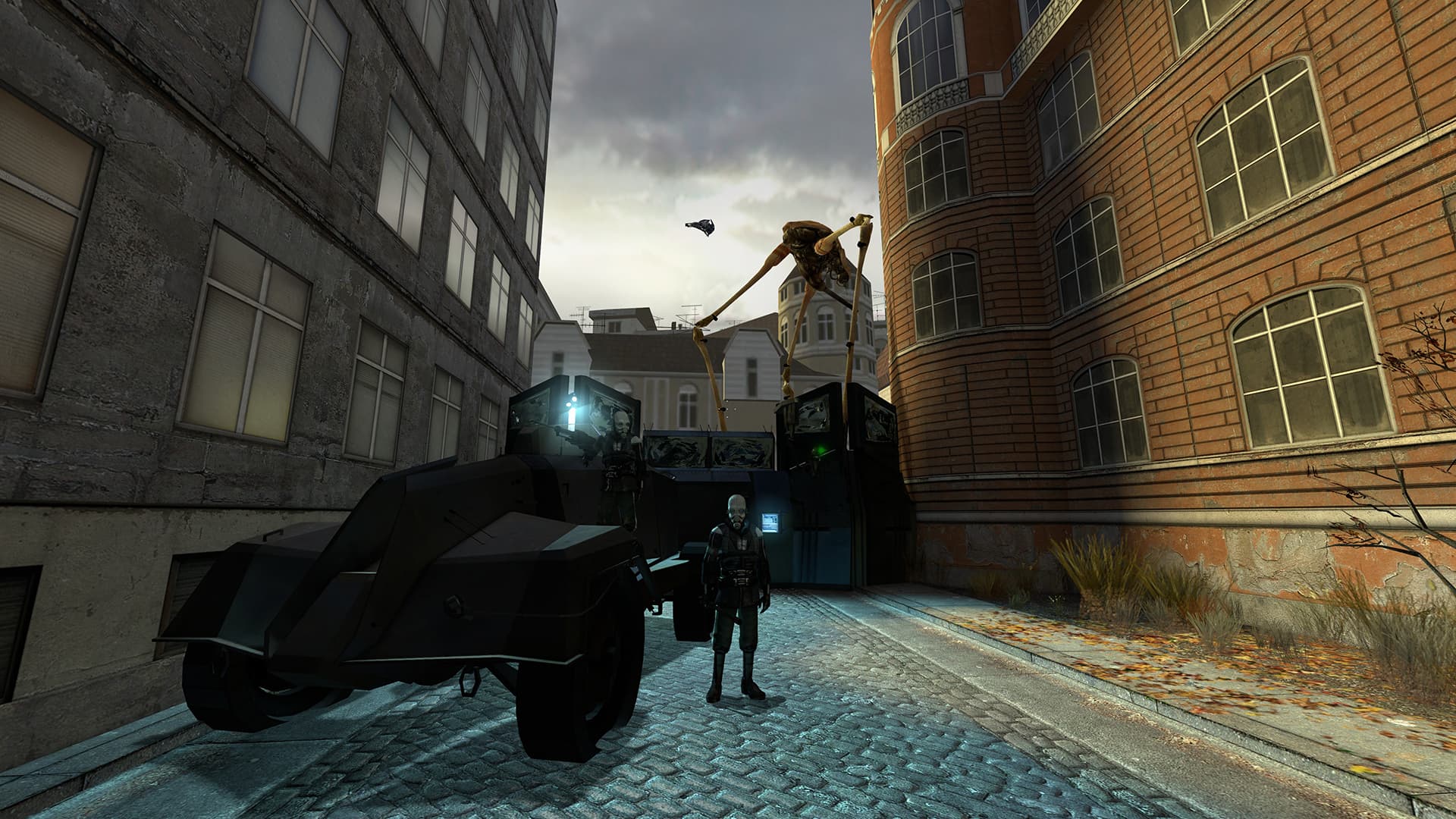
Chapter 1: Point Insertion
I know, I know. Just hear me out.
I realize I just went through multiple gameplay-filled chapters only to put a chapter where you literally just walk around in a higher ranking. But I’d argue you have no Half-Life 2 without Point Insertion, much like you have no Half-Life 1 without first walking through the Anomalous Materials lab.
A lot of the most memorable bits of Half-Life 2 happen in this chapter. The G-Man waking you up, Doctor Breen’s first monologue, “Don’t drink the water,” the first time you actually see a Strider (long before realizing they’re not all that fun), picking up that can, Barney’s introduction and even Alyx Vance herself debuting at the tail end of Point Insertion. If somebody quotes Half-Life 2 at you, chances are, it’s from its introduction.
Even a decade and a half removed, there’s still no denying the impact of that atmosphere, either. This immediately establishes City 17 as a place and I still can’t start any playthrough without spending an inordinate amount of time just taking in the sights, playing with the physics and messing with the metrocops.
If Half-Life 2 was just another shooter, then Point Insertion wouldn’t even exist. But it isn’t, and it’s thanks to the first half hour of just being a stranger in a strange land, hence its place on this list.
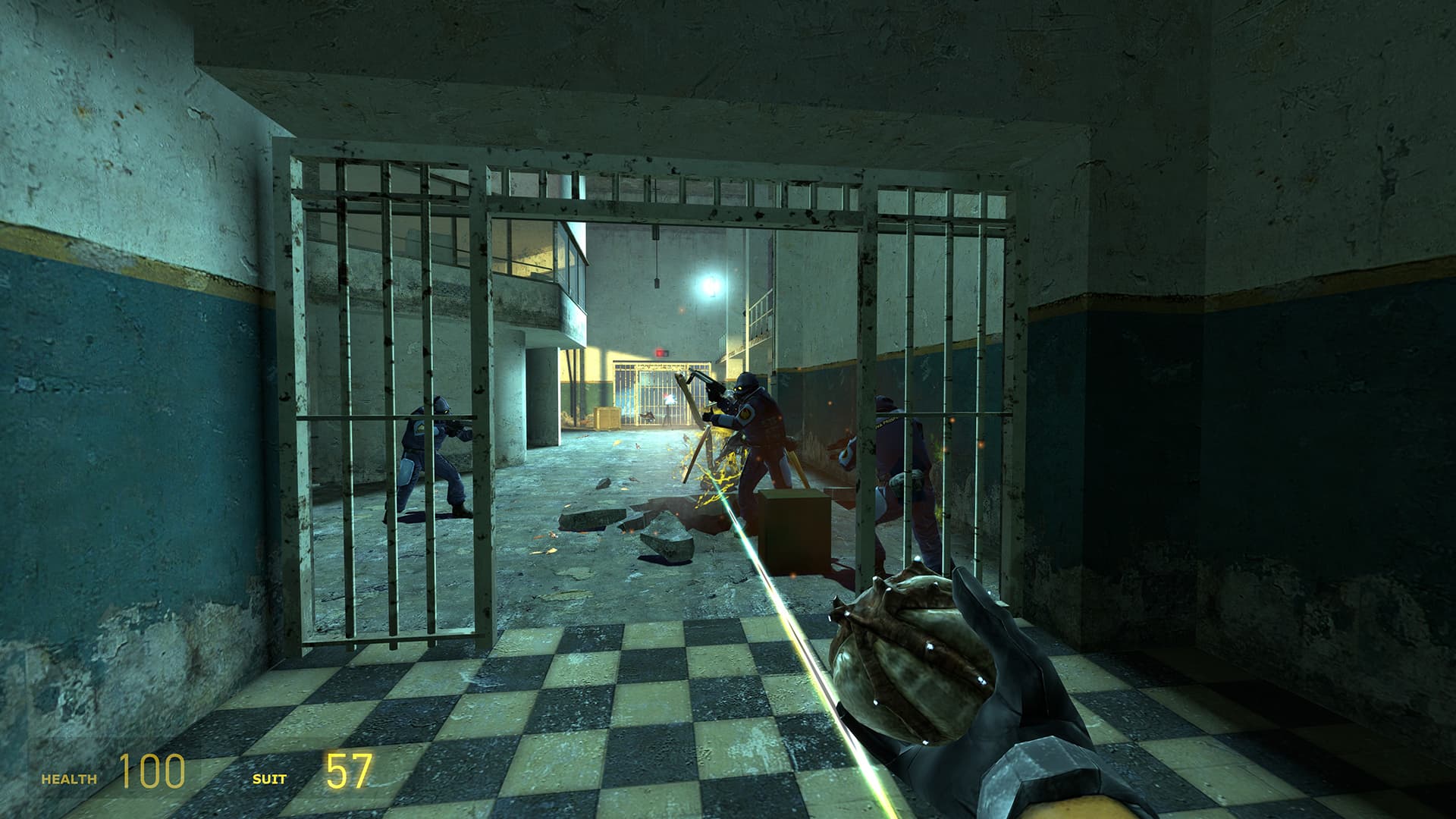
Chapter 9: Nova Prospekt
Much like “A Red Letter Day”, this was one of the most-shown parts of the game before release, and there’s a good reason for that. Nova Prospekt is brilliant in every way, from its oppressive, dystopian atmosphere to its varied gameplay and even its environmental storytelling. Put simply, it’s peak Half-Life 2.
Before you get to command human squads in a city-wide fight against the Combine, you first get to break into their prison with an endless army of Antlions, nasty buggers you just spent the past two chapters fighting. There’s nothing quite as satisfying as turning a former enemy into an ally and seeing the Combine get increasingly overwhelmed by your antics.
As previously mentioned, while its sub-chapter of sorts eventually becomes a bit too “Combine-y”, this one has the perfect balance between the downtrodden prison facility and the Combine technology grafted on top of it.
I’m not even mentioning the Gunship battle at Nova Prospekt or the later fight against another Antlion Guard, this time in a far more interesting setting with plenty of physics objects to use as impromptu ammunition. There’s just too much greatness here, and it makes Nova Prospekt not only one of the best chapters in Half-Life 2, but also in gaming overall, period.
Of course, it’s still not the best.

Chapter 6: “We Don’t Go to Ravenholm…”
Chapter 6 is a swerve back into Half-Life’s horror roots that terrified many a player, myself included. Up until this point, it’s mostly been an action romp, with a city escape, a high-octane chase by airboat and eventually a little break in Black Mesa East. It doesn’t last long, though, and what follows is one of gaming’s pivotal moments.
Expertly teased in the previous chapter, Ravenholm is a terrifying place, showcasing just how far the Combine are willing to go and forcing you to traverse its zombie-infested corners with what little ammo you can find… and a Gravity Gun, first put to proper use here, and how.
From the abundant and very fun traps to the deadly physics objects such as sawblades and propane canisters, “We Don’t Go to Ravenholm…” is simultaneously the scariest and most fun that Half-Life 2 gets, all propelled by even greater heights by the one-off, fan-favorite character of Father Grigori.
It’s been so long that I don’t remember much of my very first playthrough of Half-Life 2, way back in the mid-noughties, but I do vividly recall being huddled in a corner of Ravenholm, low on ammo and scared to death, as a rotating saw trap broke down and the absolutely horrifying fast zombies—another great debut here—closed in rapidly, hungry for blood. That’s a testament to how fantastic this chapter is, and I envy anyone who gets to experience it for the first time.
Do go to Ravenholm. It’s the best Half-Life 2 has to offer.

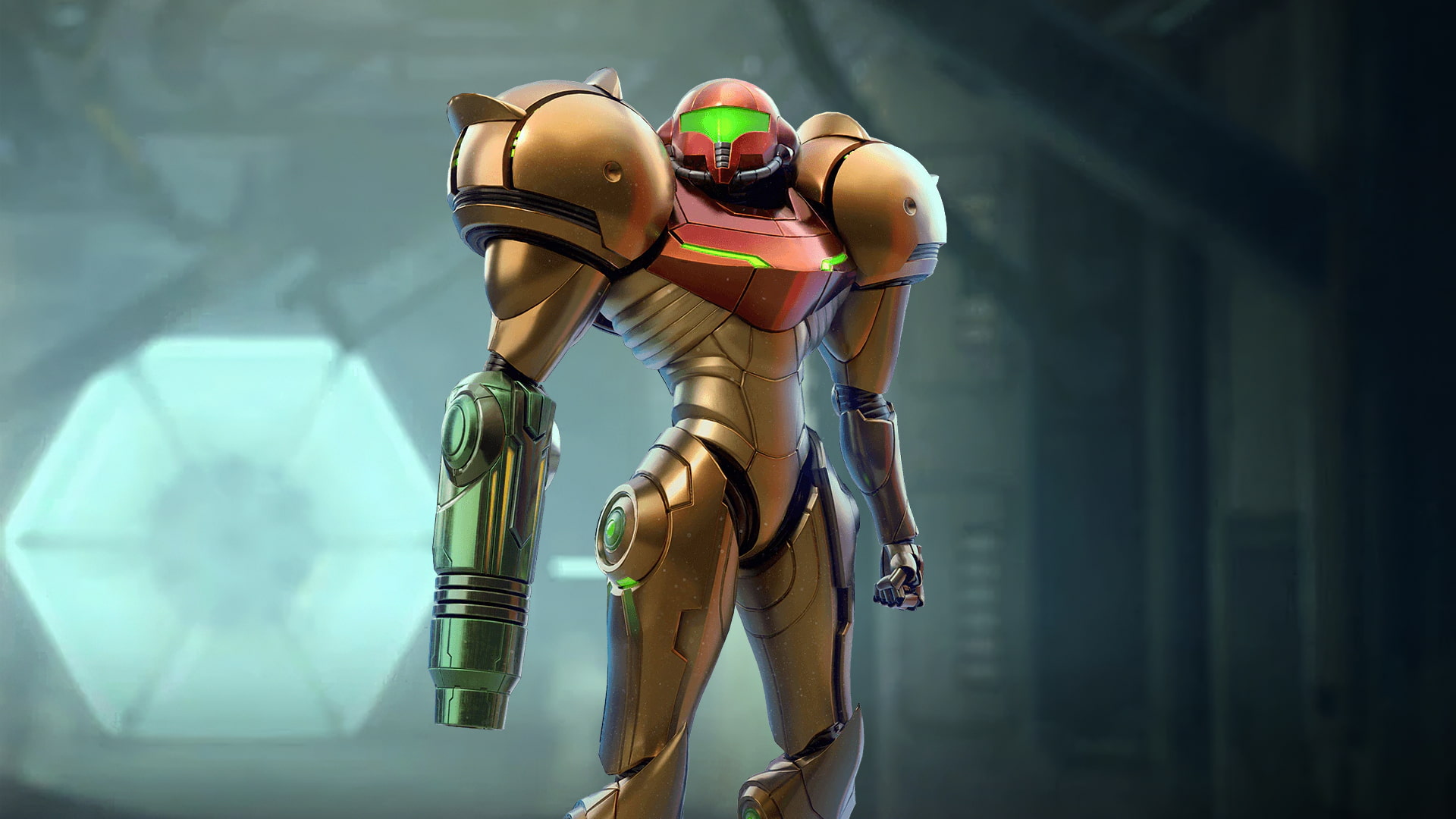
L review, bad taste in the level design. And you should never put the most tedious part of the game (chapter 4: Water Hazard) at that high of a rank. No one, and I mean NO ONE likes this sequence of the game. Bad review 0/10
@Dre Appreciate the honesty!
Thank you for the thought-out review. Always so interesting to see what others love about this amazing game. I must have played this through 10+ times now, and for me Route Kanal, Water Hazard, and Nova Prospekt remain my favourites. It’s the sense of not belonging and – especially – being pursued that does it for me. These are very very closely followed by Ravenholm, which almost feels like a different game (in a good way). I don’t understand the dislike some people have for the early chapters. The only bits of the game I don’t love are the last parts. Why, after all the struggle, does Gordon just strap himself in to be captured by Breen? We don’t know Mossman will have a change of heart at the 11th hour. It feels rushed, and not in keeping with the combine loss of control that the previous chapters worked so hard to show. Personally I don’t like the mega gravity gun. It doesn’t make sense to me within the story. It feels like a fun, but out of place, gameplay element. But even my least favourite chapters are still fantastic fun.
Thank you for giving Water Hazard the love it deserves. The soundtrack, the gameplay, the different sections, i would even dare to rank it up higher.
Thx for sharing this!